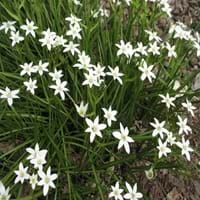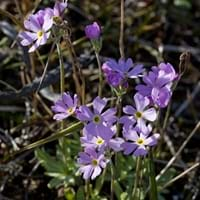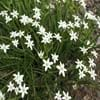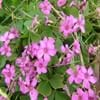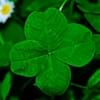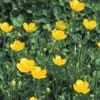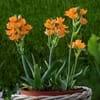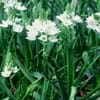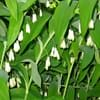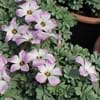What is
Life Span
Perennial
Perennial
Type
Bulb or Corm or Tuber
Perennial
Origin
Eastern Europe, Southern Europe, Turkey
Northeastern United States, Mid-Atlantic United States, Southeastern United States, North-Central United States, Central United States, South-Central United States
Types
Not Available
Not Available
Habitat
Cultivated Beds, meadows
Roadsides, sand dunes, Waste areas
USDA Hardiness Zone
5-8
5-8
AHS Heat Zone
8-1
8-1
Sunset Zone
21,22
1a, 1b, 2a, 2b, 3a, 3b, 4, 5, 6, 7, 8, 9, 10, 11, 12, 13, 14, 15, 16, 17, 18, 19, 20, 21, 22, 23, 24
Habit
Clump-Forming
Clump-Forming
Information
Plant Size
Minimum Height
10.20 cm
99+
610.00 cm
99+
Minimum Width
12.70 cm
99+
460.00 cm
99+
Plant Color
Flower Color
White, Light Green, Silver
White, Ivory
Flower Color Modifier
Bicolor
Bicolor
Fruit Color
Not Available
Tan
Leaf Color in Spring
Green
Green
Leaf Color in Summer
Light Green
Green
Leaf Color in Fall
Several shades of Green
Green
Leaf Color in Winter
Light Green
Light Green
Shape
Leaf Shape
Oblong-lanceolate
Oblong
Thorns
No
No
Season
Plant Season
Spring
Summer
Growing Conditions
Sunlight
Full Sun, Partial Sun, Partial shade
Full Sun, Partial Sun
Growth Rate
Fast
Medium
Type of Soil
Clay, Loam, Sand
Loam, Sand
The pH of Soil
Acidic, Neutral, Alkaline
Acidic, Neutral, Alkaline
Soil Drainage
Well drained
Well drained
Bloom Time
Early Spring, Spring
Early Summer, Summer, Late Summer
Repeat Bloomer
No
Yes
Tolerances
Drought
Variety of soil types
Care
Where to Plant?
Container, Ground, Pot
Container, Ground, Pot
How to Plant?
Seedlings
Divison, Seedlings, Stem Planting
Plant Maintenance
Medium
Low
Watering Plants
Watering Requirements
Average Water Needs
Average Water Needs, Do Not over Water, Never Over-water, Requires regular watering, Water more in summer
In Summer
Lots of watering
Lots of watering
In Spring
Moderate
Moderate
In Winter
Average Water
Average Water
Soil
Soil pH
Acidic, Neutral, Alkaline
Acidic, Neutral, Alkaline
Soil Type
Clay, Loam, Sand
Loam, Sand
Soil Drainage Capacity
Well drained
Well drained
Sun Exposure
Full Sun, Partial Sun, Partial shade
Full Sun, Partial Sun
Pruning
No pruning needed
Remove damaged leaves, Remove dead branches, Remove dead leaves, Remove dead or diseased plant parts
Fertilizers
Water soluble fertilizers
All-Purpose Liquid Fertilizer, fertilize in growing season
Pests and Diseases
No serious insect or disease problems
Slugs, Snails
Plant Tolerance
Drought
Variety of soil types
Facts
Flowers
Showy
Yes
Flower Petal Number
Single
Single
Fruits
Showy Fruit
No
No
Edible Fruit
No
No
Fragrance
Fragrant Flower
Yes
No
Fragrant Fruit
No
No
Fragrant Leaf
No
No
Fragrant Bark/Stem
No
No
Showy Foliage
No
No
Showy Bark
No
No
Foliage Texture
Medium
Fine
Foliage Sheen
Glossy
Matte
Evergreen
No
No
Invasive
No
No
Self-Sowing
Yes
Yes
Attracts
Insects
Insects
Allergy
Dermatitis, Poisonous to grazing animals
Abdominal pain, Constipation, Diarrhea, Skin irritation
Benefits
Uses
Aesthetic Uses
Beautification, Showy Purposes
Beautification, Borders, Landscape Designing, Showy Purposes
Beauty Benefits
Not Available
Good for skin, Making cosmetics, Stops hair loss
Edible Uses
Yes
Yes
Environmental Uses
Air purification
Air purification, Food for insects, Versatility
Plant Benefits
Medicinal Uses
Certain forms of cancer, Homeopathy
Eczema
Part of Plant Used
Root
Root
Other Uses
Used As Food
Decoration Purposes, Medicinal oil, Showy Purposes, Used as Ornamental plant, Used for its medicinal properties
Used As Indoor Plant
Yes
Yes
Used As Outdoor Plant
Yes
Yes
Garden Design
Alpine, Container, Mixed Border, Rock Garden / Wall
Edging, Feature Plant, Groundcover, Mixed Border
Scientific Name
Botanical Name
ORNITHOGALUM balansae
Primula mistassinica
Common Name
Star-of-Bethlehem
Mistassini primrose, Lake Mistassini primrose, bird's-eye primrose
In Hindi
Star-of-Bethlehem
Mistassini Primrose
In German
Stern -of- Bethlehem
Mistassini Primrose
In French
Star- de - Bethléem
Primrose Mistassini
In Spanish
Estrella de Belen
Mistassini Primrose
In Greek
Star- of- Βηθλεέμ
Mistassini Primrose
In Portuguese
Star of -Bethlehem
Mistassini Primrose
In Polish
Star- of- Betlejem
Mistassini Primrose
In Latin
Star of Bethlehem ,
Mistassini Primrose
Classification
Kingdom
Plantae
Plantae
Phylum
Magnoliophyta
Magnoliophyta
Class
Lilopsida
Magnoliopsida
Order
Liliales
Myrtales
Family
Asparagaceae
Onagraceae
Genus
Ornithogalum
Oenothera
Clade
Angiosperms, Monocots
Angiosperms, Eudicots, Rosids
Tribe
Ornithogaleae
Onagreae
Subfamily
Ornithogaloideae
Onagroideae
Number of Species
180
99+
145
99+
|
||
|
||
|
